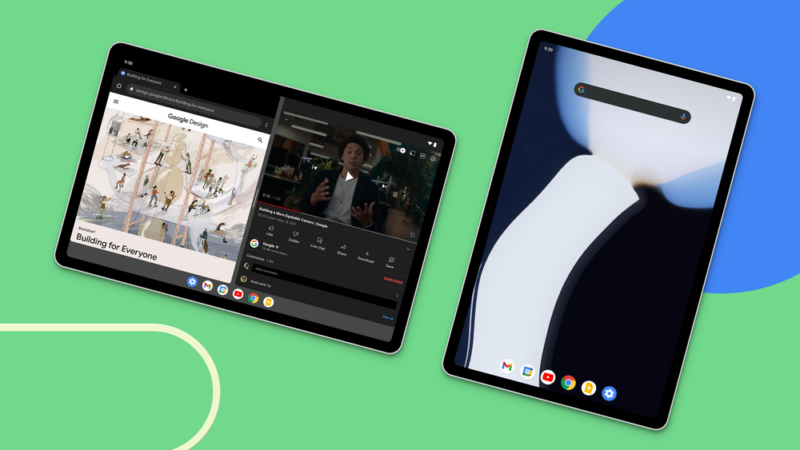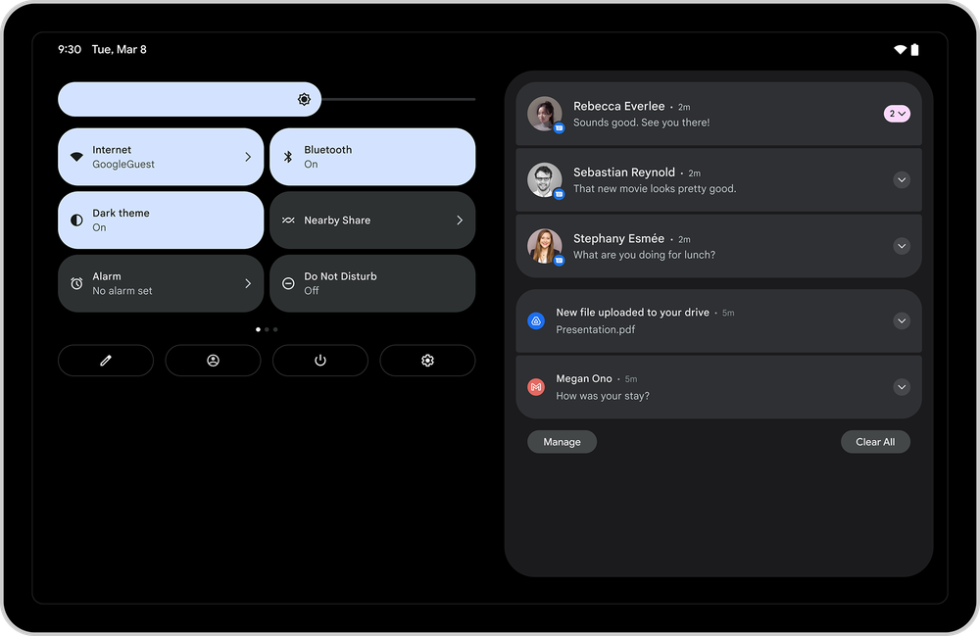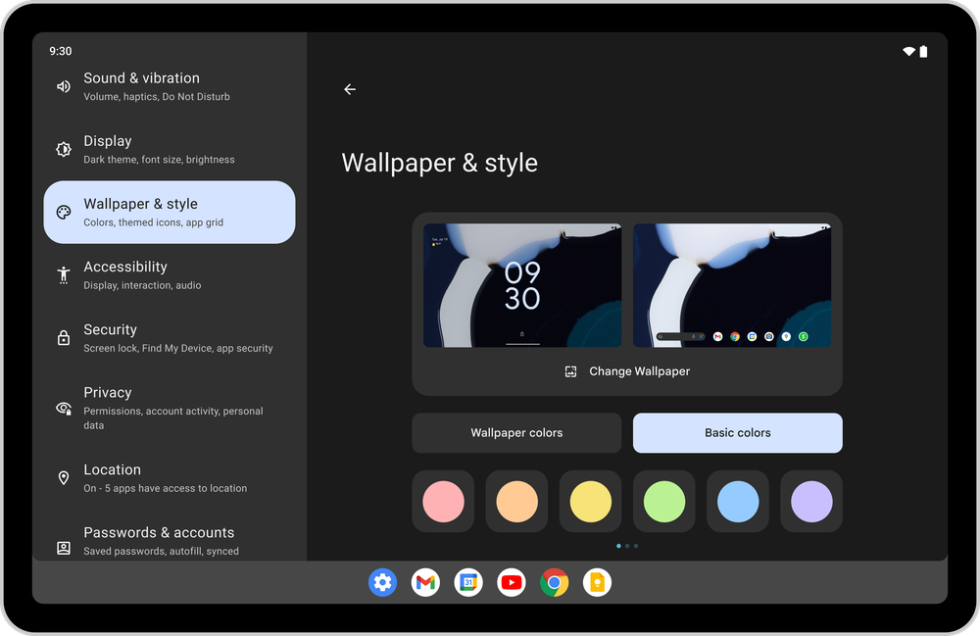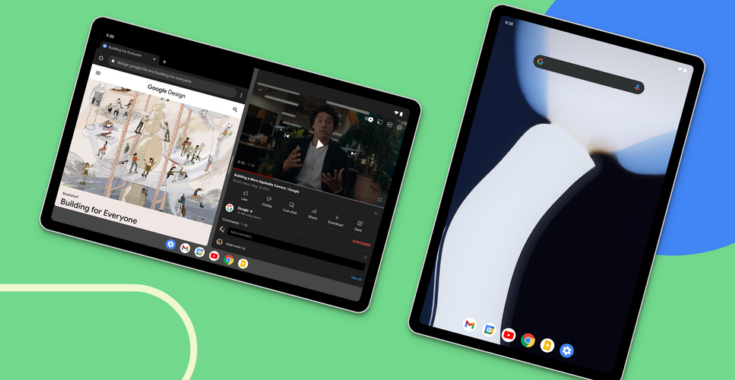
Google’s tablet-focused release of Android, Android 12L, is hitting production devices today as “Android 12.1.” Google’s tablet update is debuting in a rather awkward fashion with no actual tablet hardware to run on. Google says that tablet hardware will be coming “later this year” with Samsung, Lenovo, and Microsoft planning foldables and tablets with the new OS.
What we’re getting today are Pixel phone releases for the Pixel 3a, Pixel 4, Pixel 4a, Pixel 5, and Pixel 5a. The Pixel 6 is once again not getting an update at the same time as other devices, though Google tells 9to5Google that a Pixel 6 update will be out later this month. Since almost all of the Android 12L features are tablet features, the release does little for phones.

Ron Amadeo
The big features of Android 12.1 are a new taskbar UI for tablets, dual-pane UIs for the notification panel and system settings, and a new recent-apps view for bigger screens. For normal-sized screens, you get the smallest amount of tweaks, like the ability to turn off Android 12’s big lock screen clock and a new UI for quickly picking wallpaper.
If Google wants to claw its way back into the tablet market, a few OS-level tweaks are a good start. But if the search giant really wants to be successful, it needs to update its apps to support dual-pane tablet interfaces. Google has previously done coordinated, companywide pushes for certain Android releases. When the new Material You design guidelines launched with Android 12, Google was ready with day-one updates for Gmail, Chrome, the Play Store, YouTube Music, Google Calendar, and more. When Google decided dark mode was a good idea, we gradually saw every Google app be updated to support the new style.

Now Google needs the same thing for tablets: a huge, coordinated, companywide push for tablet apps. The device numbers will not be there to support this initially, but in the chicken-and-egg scenario that is building an ecosystem, you must to build the software first before customers will buy in. I was hoping we would see a batch of app updates launch alongside Android 12L, but that does not look like the case today.
Allowing Samsung and Lenovo to be ready by the end of the year with new tablet functionality really does seem to be the point of the Android 12.1 release. As the name suggests, this is one of the smaller Android releases in recent memory, with only a handful of core OS tablet features and not much else. Android 12L was completely outside of the normal Android release schedule, with a weird October-to-March developer preview. As of February, Google was actually running simultaneous developer previews for Android 12L and Android 13 at the same time. Rushing the 12L features out the door gives Samsung and Lenovo the usual six-month period to have a new Android release ready in time for the holidays. Hopefully, we’ll see some tablet apps come out by then.



